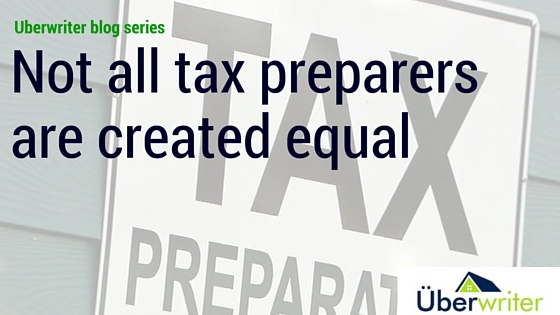Is your CPA Getting it Wrong?
Recently I was working on a purchase loan for a borrower who is self-employed and owns three different businesses. In reviewing the borrower’s two 1120S and one 1065 tax returns I noticed something interesting. I notice this in about ten percent of all tax returns I review.
What has stood out to me on this review and over the years is not all tax professionals and C.P.A.’s fill out a borrowers tax returns in the same fashion. More directly if you are in a role that is responsible for approving a borrower’s income you have to do more than just memorize what line depreciation is on a Schedule C you must understand what items are required additions and subtractions. When you review the guidelines from FNMA, FHLMC, and FHA each set of instructions outlines what type of deductions should be adjusted for in each business type not what tax line to add or subtract on form 1084 or form 91. Let me share a few common things I have seen over the years that may help you in your income review.
- Schedule C has deductions which actually have designated lines on page one lumped into the “other” category Line 27a. The most common item I have found is meals and entertainment which should be on Line 24b, but the CPA has it listed on page two section five.
- Schedule C has hidden depreciation in page two under Line 44A. This line is for the standard business mileage deduction; part of this deduction is depreciation. This depreciation is either .22 or .23 cents per mile depending on what year of return you are reviewing.
- Schedule E real estate owned under Line 19 “other” you will find HOA dues listed on supporting statements. These dues can be added back in to the gross rent total if you are subtracting the HOA dues with the properties PITI. Note this is not an error as there is no line item for HOA dues, so don’t forgot to check.
- 1065, 1120S, and 1120 much like the Schedule C, I have seen meals and entertainment listed under “other” expense and added to a supporting schedule instead of the designed IRS line (schedule M-1 for example).
- Another common item on these corporate returns is different types of deprecation which again should be listed on page one of the corporate returns but listed on supporting statements.
These examples are just a few of the variations I have noticed during many tax returns reviews in my career. This point should reinforce the idea that underwriters are essential to the process in looking for these little variations. Computers are good, but at the end of the day you need a human making the judgement call. So my advice is to use tools (such as FNMA 1084 form, company provided excel, or online software like IncomeXpert) to help increase efficiency in your daily work day. But do not let these tools replace your ability to understand tax returns and complete your job as an underwriter.

